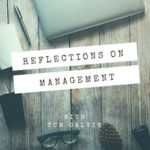119: Management & the Worker — Roethlisberger & Dickson
We return for another look at the Hawthorne Studies through Fritz Roethlisberger and William Dickson’s 1939 book Management and the Worker. The work chronicles five years of experiments that initially sought the optimal conditions for increased worker performance but evolved into an examination of the social controls that worker exercise over themselves for self-preservation against managerial decisions. It also includes an introspective look into the researchers themselves as they had to design new experiments to make sense of the surprising and contradictory findings. The book is incredibly detailed and laid the foundation for the development of the Human Relations tradition in organization studies.











